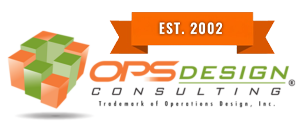In 2025, the question of whether to manage your own warehousing, distribution, or fulfillment operations or to outsource to a third-party logistics provider (3PL) is more strategic — and complex — than ever. With rising customer expectations, labor shortages, supply chain volatility, and the explosion of e-commerce, the decision isn’t just operational; it’s existential for many businesses.
The 2025 Lens: What’s Changed?
Since the early 2020s, several forces have reshaped the logistics landscape:
- AI-driven automation and robotics have increased efficiency but demand capital investment and specialized management.
- Sustainability mandates now require carbon tracking, green fulfillment practices, and ESG reporting.
- Omnichannel fulfillment is standard, requiring real-time inventory visibility across retail, DTC, B2B, and marketplaces.
- Labor constraints continue to affect warehouse operations, pushing firms toward automation or 3PLs with labor flexibility.
- Geopolitical disruptions and reshoring initiatives have prompted greater focus on resilient and regionally diversified fulfillment networks.
In this climate, deciding between in-house logistics and 3PL outsourcing isn’t just about cost—it’s about agility, control, customer experience, and long-term strategic alignment.
Core Considerations: A Modern Framework
To properly evaluate whether to keep logistics in-house or outsource, a quantitative and qualitative analysis should include:
- Current Operations Assessment
- Efficiency, accuracy, throughput, and service levels.
- Are you meeting your KPIs? Is your tech stack modernized?
- Strategic and Tactical Goals
- Do you prioritize flexibility, customer experience, cost optimization, or speed to market?
- Customer Expectations
- Can you meet next-day or same-day delivery expectations internally?
- Do your customers demand order customization, sustainability, or value-added services?
- Technology and Automation Investment
- Will upgrading your warehouse tech provide long-term ROI?
- Do you have internal capabilities to implement and manage automation?
- Financial Impact
- Capital vs. operating expenditure considerations.
- How will the decision affect EBITDA, scalability, and forecasting?
- Flexibility and Scalability
- Seasonal fluctuations, product launches, or market entry—can you scale without massive overhead?
- Risk and Control
- Are you willing to trade some control for cost-efficiency and scalability?
- What compliance, data security, or customer experience risks are involved?
A Critical Step: Identify the Operations Performance Gap (OPG™)
A common mistake is comparing current internal costs and service levels directly with a 3PL proposal. Instead, first identify your Operations Performance Gap (OPG™) — the difference between your current operational performance and your potential if you optimized internally.
If you have underperforming internal systems, it’s unfair to compare them directly with a high-performing 3PL model. Factor in the costs and timelines required to close that gap internally before deciding whether outsourcing offers a true advantage.
Outsourcing May Not Be the Answer
While outsourcing can offer access to modern technology, labor flexibility, and geographic reach, it’s not always the best choice. Adding a third-party intermediary can introduce:
- Higher long-term costs if volume thresholds aren’t met.
- Reduced visibility and control.
- Dependency on external service quality and labor practices.
However, when done correctly, 3PL partnerships can unlock:
- Cost efficiency through scale.
- Speed-to-market advantages.
- Shared risk in volatile markets.
- Access to modern tech stacks and AI tools without large capital investment.
If Outsourcing is Right for You, Be Strategic
If your analysis favors outsourcing, follow a disciplined, data-driven approach to selecting and managing your 3PL:
- Define requirements: Operational volumes, service levels, locations, tech integration needs.
- Shortlist qualified 3PLs: Industry fit, proven track record, scalability, cultural alignment.
- Administer a competitive bid process: Focus on transparency and comparable metrics.
- Analyze responses: Cost, service guarantees, innovation potential, partnership structure.
- Negotiate the contract: Favor flexibility, performance SLAs, and transparency.
- Plan a seamless transition: Include change management, system integration, and contingency planning.
- Manage the partnership: Retain strategic oversight. Outsource execution, not responsibility.
Continuous Improvement is Non-Negotiable
Outsourcing doesn’t mean disengaging. The best-performing 3PL relationships are managed actively, with:
- Clear KPIs aligned to business goals.
- Real-time data sharing for transparency.
- Quarterly performance reviews.
- Innovation roadmaps and improvement initiatives.
As logistics becomes increasingly central to brand experience and profitability, continuous benchmarking and strategic refinement are vital.
Final Thoughts: Strategy First, Logistics Second
OPSdesign Consulting emphasizes this core principle: You can outsource execution, but you cannot outsource strategy. Whether you’re operating in retail, healthcare, CPG, or industrial sectors, the logistics function must align with your broader business objectives — not operate in a vacuum.
Our consultants help organizations evaluate in-house vs. outsourced logistics options using a structured, performance-based methodology. We don’t just guide vendor selection; we help you build resilient, future-ready logistics ecosystems.

